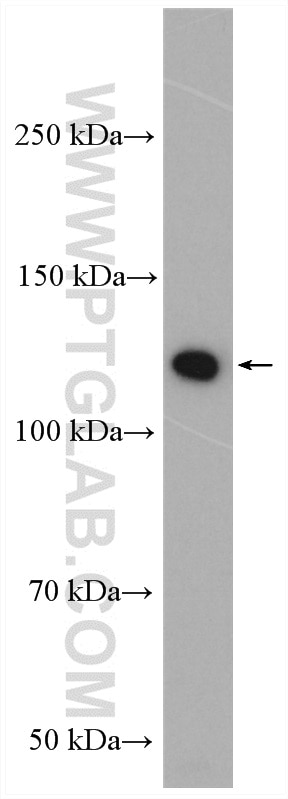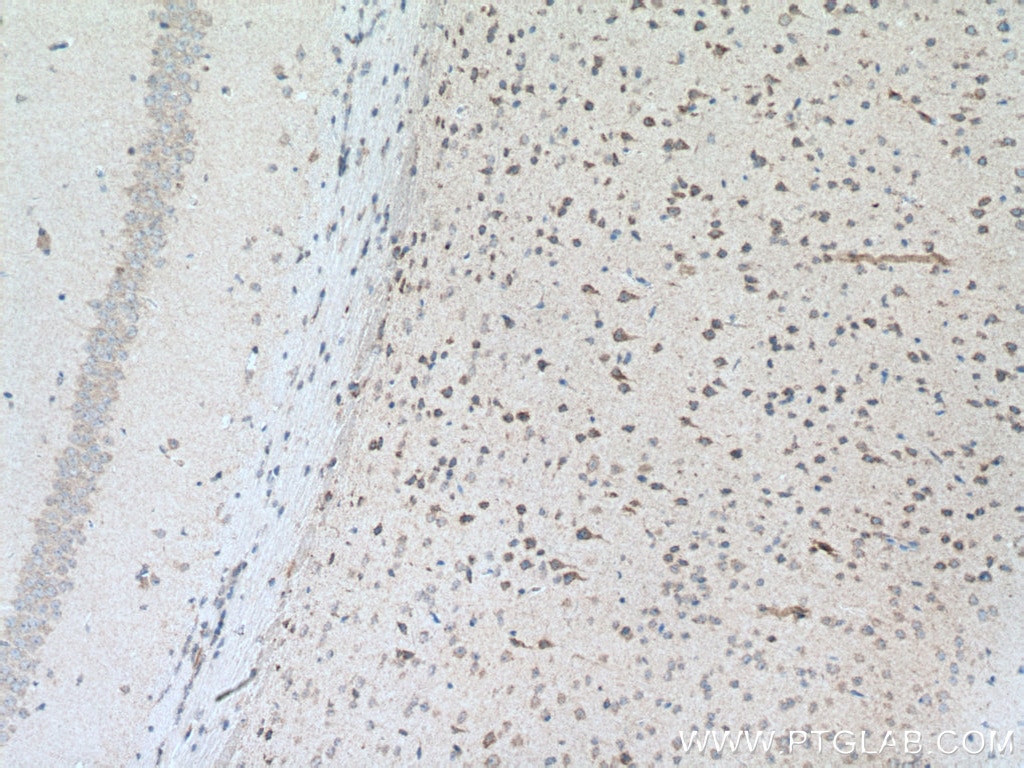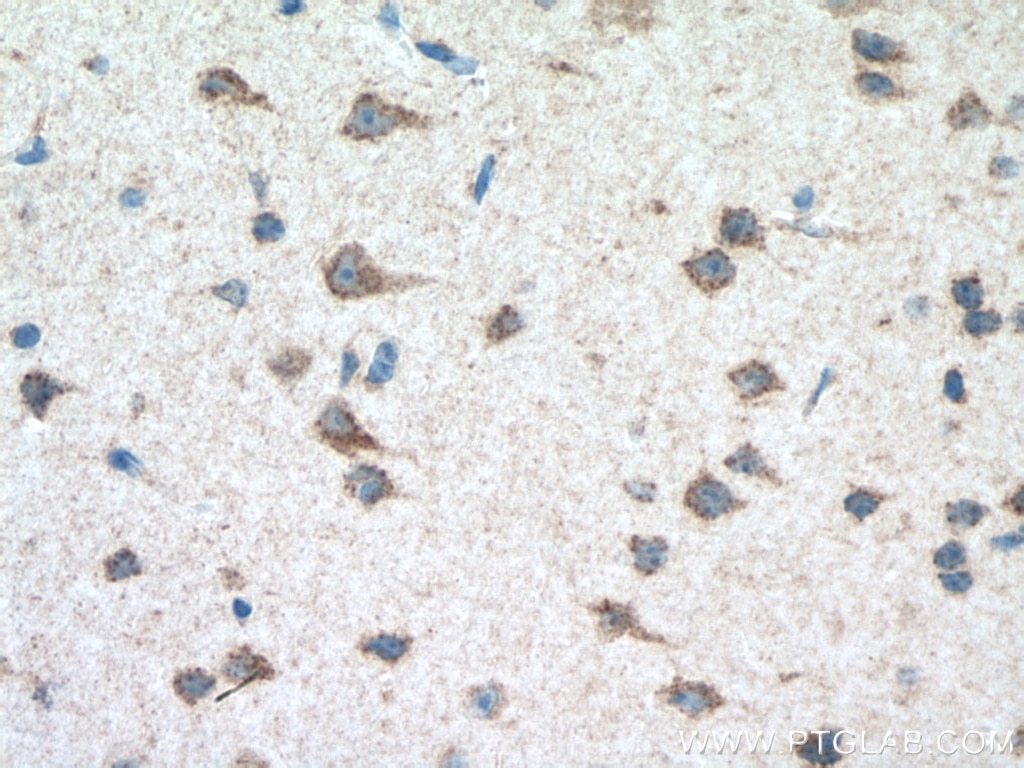Anticorps Polyclonal de lapin anti-PARK9/ATP13A2
PARK9/ATP13A2 Polyclonal Antibody for WB, IHC, ELISA
Hôte / Isotype
Lapin / IgG
Réactivité testée
souris
Applications
WB, IHC, ELISA
Conjugaison
Non conjugué
N° de cat : 19141-1-AP
Synonymes
Galerie de données de validation
Applications testées
| Résultats positifs en WB | tissu cérébral de souris, |
| Résultats positifs en IHC | tissu cérébral de souris, il est suggéré de démasquer l'antigène avec un tampon de TE buffer pH 9.0; (*) À défaut, 'le démasquage de l'antigène peut être 'effectué avec un tampon citrate pH 6,0. |
Dilution recommandée
| Application | Dilution |
|---|---|
| Western Blot (WB) | WB : 1:200-1:1000 |
| Immunohistochimie (IHC) | IHC : 1:50-1:500 |
| It is recommended that this reagent should be titrated in each testing system to obtain optimal results. | |
| Sample-dependent, check data in validation data gallery | |
Informations sur le produit
19141-1-AP cible PARK9/ATP13A2 dans les applications de WB, IHC, ELISA et montre une réactivité avec des échantillons souris
| Réactivité | souris |
| Hôte / Isotype | Lapin / IgG |
| Clonalité | Polyclonal |
| Type | Anticorps |
| Immunogène | PARK9/ATP13A2 Protéine recombinante Ag11435 |
| Nom complet | ATPase type 13A2 |
| Masse moléculaire calculée | 1158 aa, 126 kDa |
| Poids moléculaire observé | 125-130 kDa |
| Numéro d’acquisition GenBank | BC030267 |
| Symbole du gène | ATP13A2 |
| Identification du gène (NCBI) | 23400 |
| Conjugaison | Non conjugué |
| Forme | Liquide |
| Méthode de purification | Purification par affinité contre l'antigène |
| Tampon de stockage | PBS with 0.02% sodium azide and 50% glycerol |
| Conditions de stockage | Stocker à -20°C. Stable pendant un an après l'expédition. L'aliquotage n'est pas nécessaire pour le stockage à -20oC Les 20ul contiennent 0,1% de BSA. |
Informations générales
ATP13A2 belongs to the P-type superfamily of ATPases that transport inorganic cations and other substrates across cell membranes. It appears to protect cells from manganese and zinc toxicity, possibly by causing cellular efflux and/or lysosomal sequestration; and from iron toxicity, possibly by preserving lysosome integrity against iron-induced lipid peroxidation (21724849)(24334770). However, it potentiates the toxic effects of cadmium and nickel on developing neurites, and of the widely used herbicide paraquat possibly by increasing polyamine uptake. Deficiency is associated with spastic paraplegia and Kufor-Rakeb syndrome, in which there is progressive parkinsonism with dementia.
Protocole
| Product Specific Protocols | |
|---|---|
| WB protocol for PARK9/ATP13A2 antibody 19141-1-AP | Download protocol |
| IHC protocol for PARK9/ATP13A2 antibody 19141-1-AP | Download protocol |
| Standard Protocols | |
|---|---|
| Click here to view our Standard Protocols |




